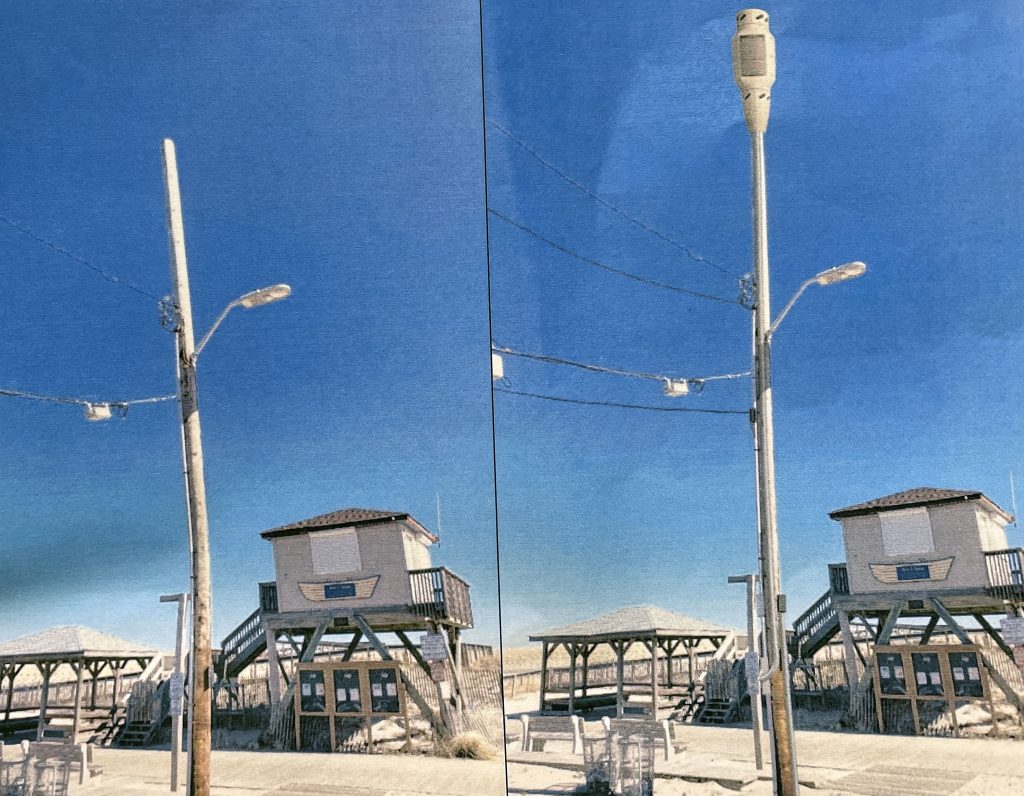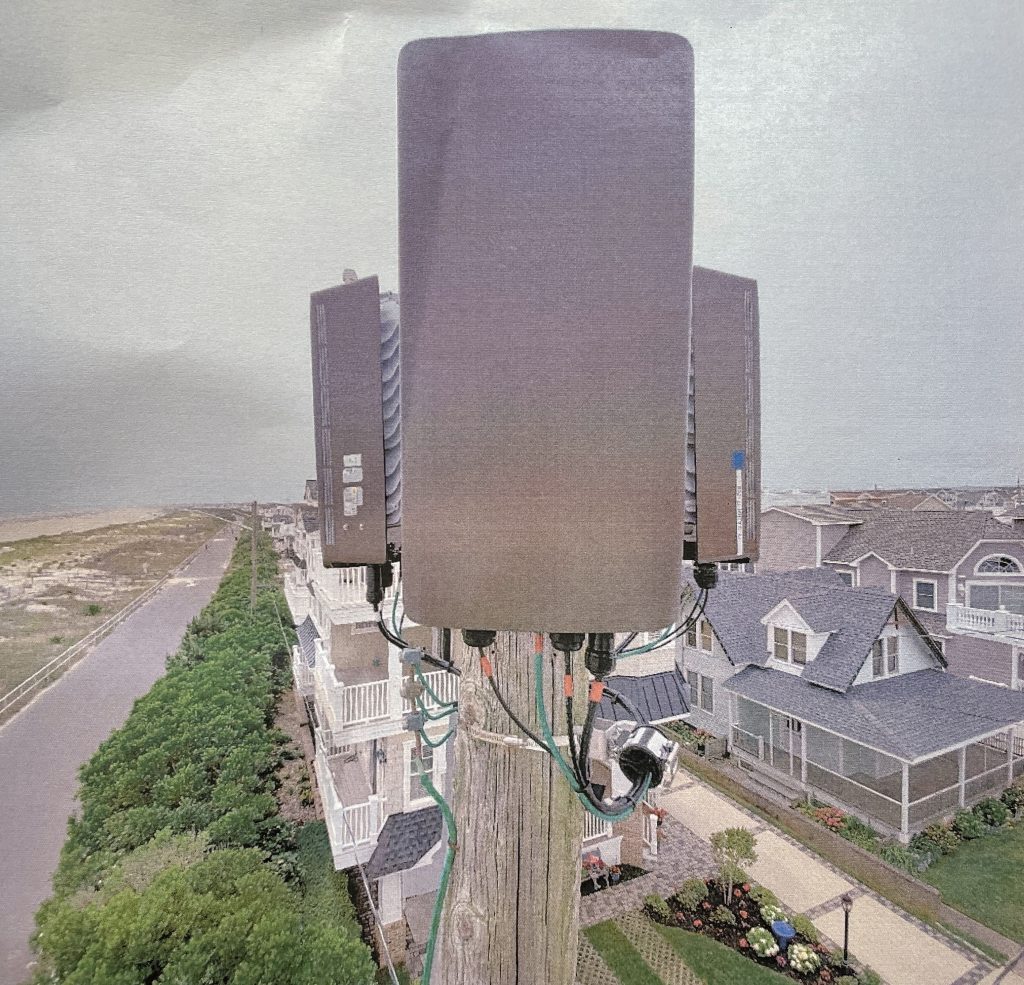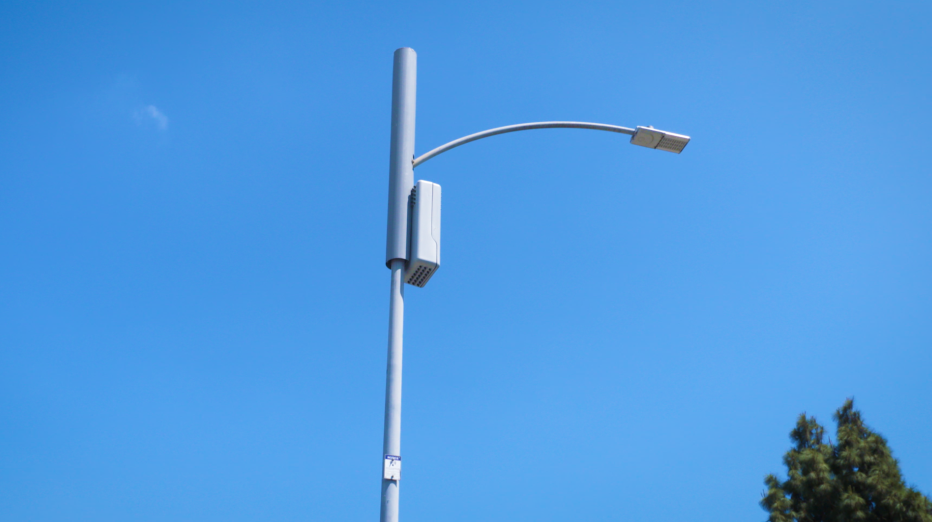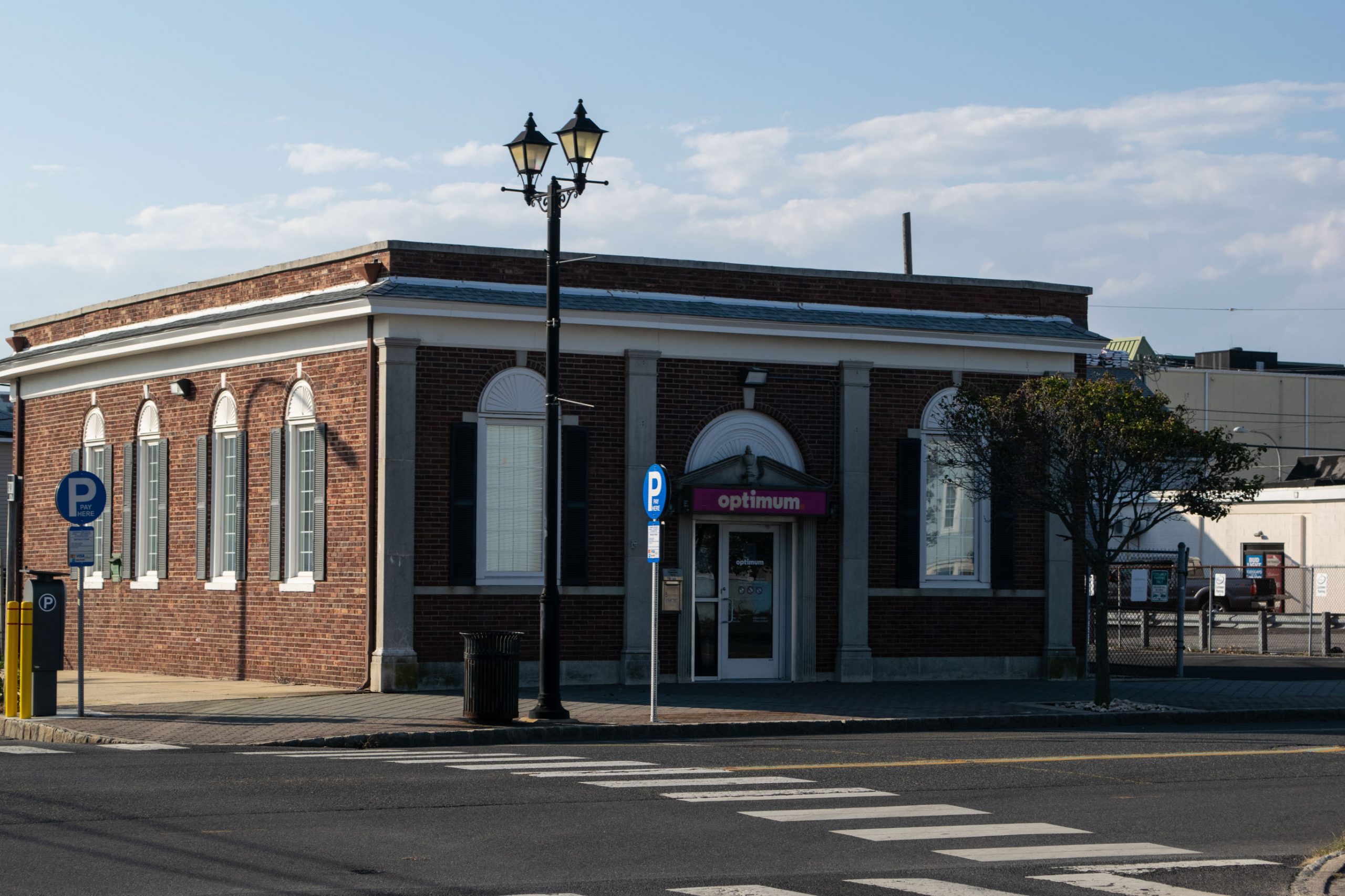
A computer rendering of what 5G network nodes will look like in Lavallette. (Source: Verizon via Lavallette Borough)
Lavallette would likely have been one of the first – if not the absolute first – municipalities in America to formally battle a wireless provider in court had officials refused to budge on the approval of a number of “small cell” nodes, often referred to as 5G towers.
The borough’s planning board previously approved the towers, which are actually boxes and antennas mated to existing utility poles, but the borough council refused to sign off. Officials complained that Verizon, which proposed a set of seven 5G towers to complement a group that was approved last year, was slow to cooperate with the town. Officials also remained unconvinced that the 5G product is safe, and was denied a request by Verizon to provide the town with a radiofrequency emissions detector or commit to regular inspections. Federal law, however, largely precludes municipal governments from barring the installation of 5G infrastructure.

A computer rendering of what 5G network nodes will look like in Lavallette. (Source: Verizon via Lavallette Borough)
Faced with the prospect of a legal battle that could easily surge into the millions of dollars against a corporation with virtually unlimited resources, the council on Monday night approved seven 5G nodes that had previously failed to pass muster with the governing body.
“It was more than a threat of a lawsuit,” said Mayor Walter LaCicero. “We were steps away from the court house. There would have been a major battle and Lavallette simply cannot afford to be the tip of the spear.”
Indeed, Borough Attorney Philip George said he was speaking with Verizon’s attorneys on the way to the meeting, reviewing the language of the approval resolutions.
Councilwoman Joanne Filippone did not mince words when it came to dealing with the nation’s largest wireless provider.
“Verizon, through the federal government, has been given almost carte blanche authority in these matters,” she said. “As a member of this council who has fought hard to prevent this, or improve it, we were threatened with a lawsuit. And there was no way the little borough of Lavallette was going to be able to fight a multi-billion dollar company with the federal government backing them up.”
Filippone went on to say that the council’s actions and the resulting negotiation will “help a little bit with the design of these nodes to make them less obtrusive.” The council also was successful in having a few of the locations of the towers moved.
The towers that were approved will be located at:
- 1103 Oceanfront (Lifeguard Building)
- 110 White Avenue
- 598 Oceanfront
- 1406 Oceanfront
- 1608 Bay Boulevard
- 76 Grand Central Avenue
- 110 Pennsylvania Avenue
The addresses may not be physical addresses, as they are estimated by Verizon based on pole location.
The council also passed a resolution urging the passage of a bill pending in the state legislature that would form a commission to study the health effects of 5G radiofrequency emissions. Officials also included language obligating Verizon to upgrade or modify any of the 5G towers pursuant to any decision released by the FCC or FAA regarding radiofrequency.
“It’s finally starting to catch on with the rest of the state that there might be an issue with the 5G,” LaCicero said.

Advertisement

Police, Fire & Courts
Police Investigating Possible Shots Fired in Seaside Heights

Police, Fire & Courts
Cops: Juvenile Arrested After 118mph Joy Ride in Seaside Heights, Toms River Kills 2

Seaside Heights & Seaside Park
Seaside Heights Mourns Passing of Boardwalk Legend, Still Working Into His 90s









